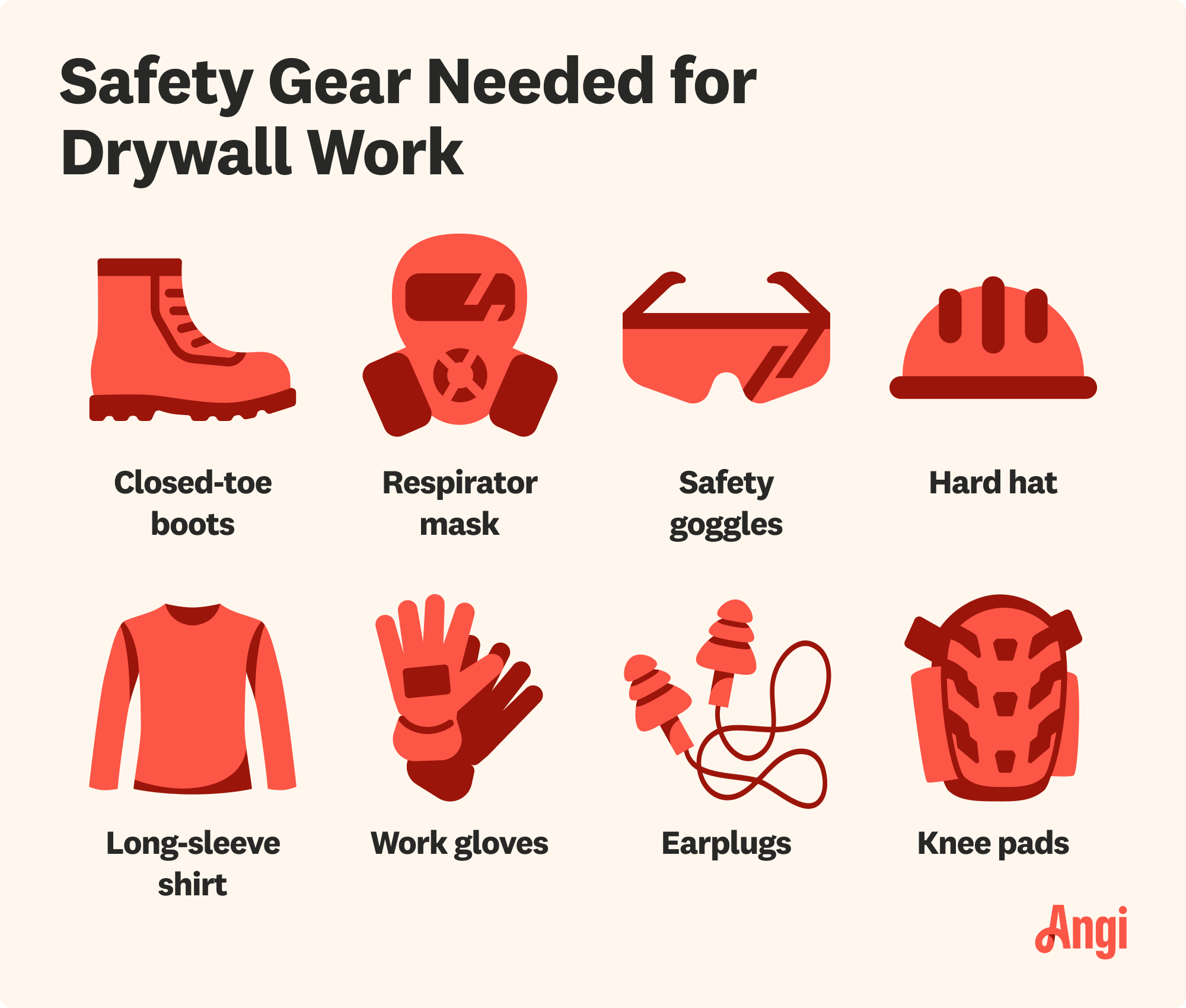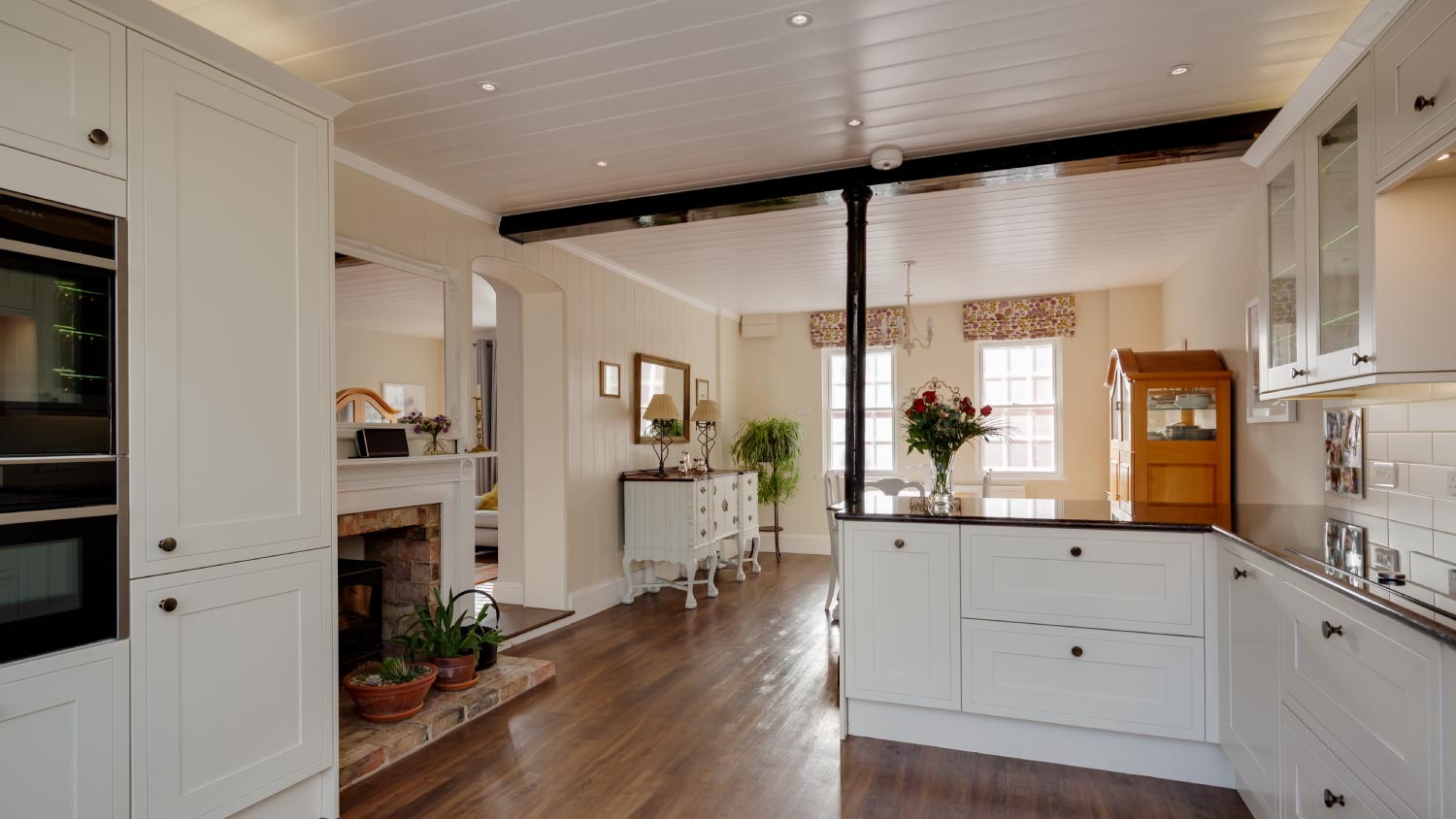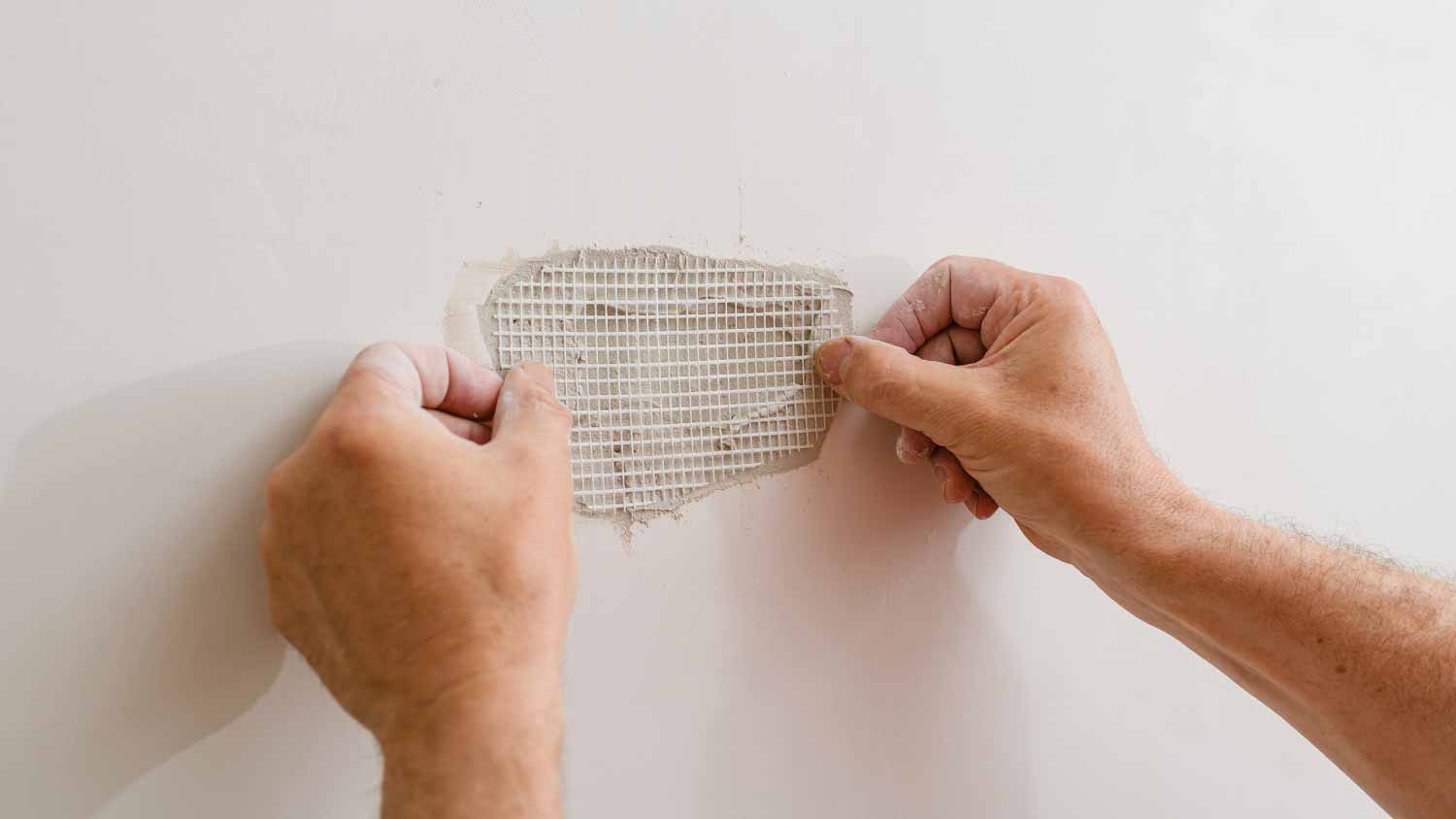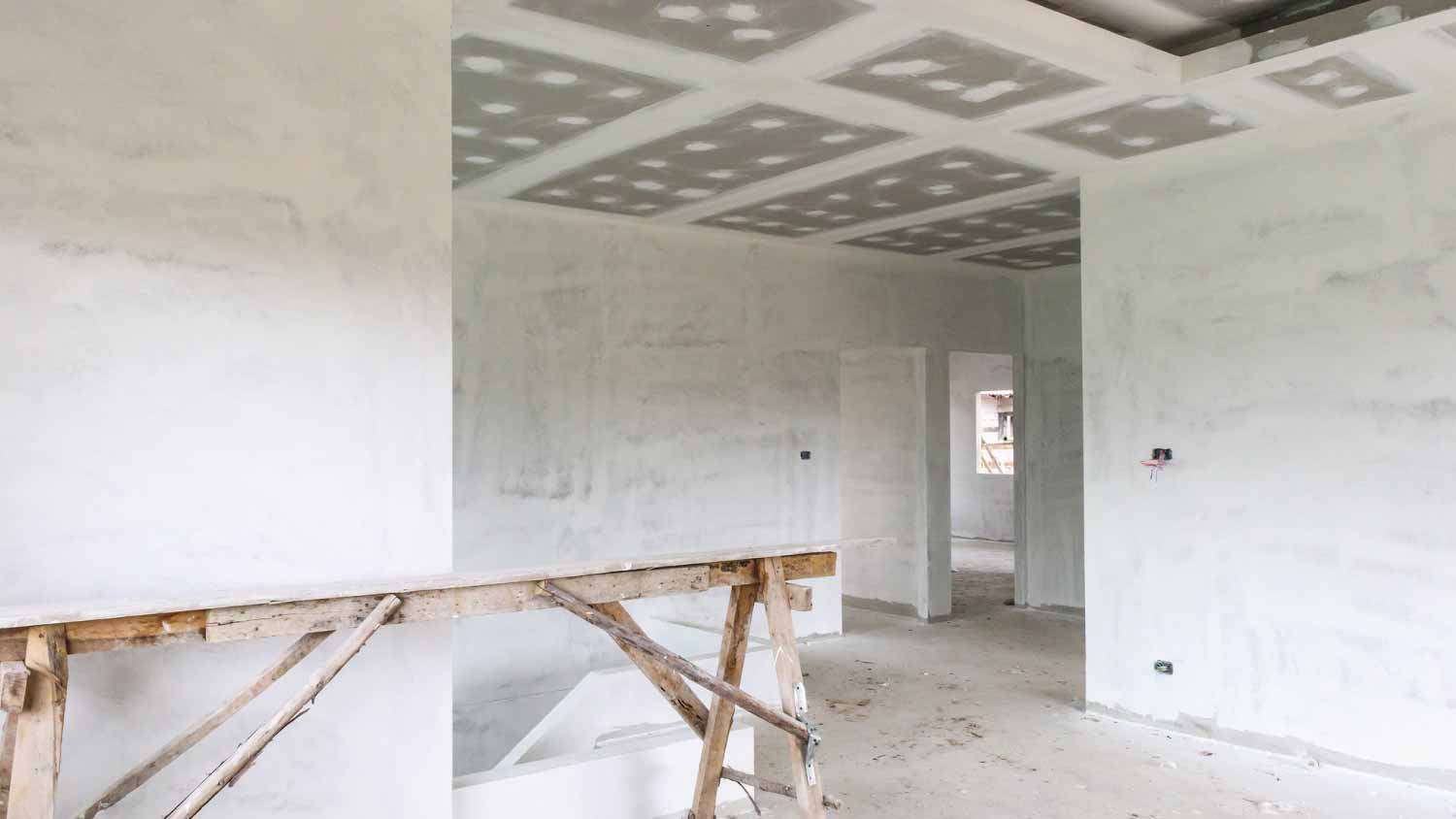
Installing drywall is the most common way to finish your home’s interior. Use this drywall installation cost guide to see what your project is likely to cost.
This classic drywall technique is a favorite amongst professionals for a reason


Hot drywall mud dries much faster than normal drywall mud.
It takes hot drywall mud 20 to 45 minutes to dry, instead of 24 hours.
If you’re new to DIY, you may find the faster drying time hard to work with.
When it comes to drywall finishing, the term "hot drywall mud" may sound like a trendy new technique, but it's actually a long-standing secret among professional drywall installers and finishers. Also known as hot mud or quick-set joint compound, hot drywall mud is a type of drywall finishing material that dries significantly faster than regular joint compound, making it ideal for projects requiring quick turnaround times.
Keep reading for a deeper explanation of what hot drywall mud is and how you can use it to achieve flawless wall finishes in your next project.
Before we explore hot drywall mud, which is just one type of drywall mud, let's start with a brief overview of what drywall mud is. Drywall mud, also known as joint compound, is a versatile material used in the construction and renovation industry. It's a mixture of gypsum, water, and other additives, designed to cover joints, seams, and imperfections in drywall panels. There are various types of drywall mud available, each with its own unique properties, drying times, and applications.
Hot drywall mud, also referred to as "hot mud" or "quick-set joint compound," is distinct from regular joint compound primarily because of its accelerated drying time. While standard joint compounds can take up to 24 hours or more to dry, hot drywall mud sets much faster, typically within 20 to 45 minutes. This rapid drying time makes it a preferred choice for professionals looking to streamline their work and complete projects more efficiently.
| Drywall Mud | Hot Drywall Mud |
|---|---|
| Typically dries in 24 hours or more | Sets rapidly, usually within 20 to 45 minutes |
| Suitable for standard drywall finishing and repair work | Ideal for quick-turnaround projects, repairs, and small to medium-sized jobs |
| Suitable for beginners and DIYers | Best for experienced professionals and skilled DIYers |
Hot drywall mud is composed of similar ingredients to traditional joint compound, with some key differences to achieve its quick-setting properties. Here's what you'll typically find in a bag of hot drywall mud:
Gypsum: Just like a standard joint compound, hot drywall mud contains gypsum, a naturally occurring mineral that provides the base for the compound.
Modifiers: To speed up the drying process, hot mud contains various additives and modifiers. These additives may include alum, which acts as an accelerator, and other proprietary ingredients specific to each manufacturer.
Water: Like regular drywall mud, hot mud requires water for activation. The amount of water added can be adjusted to control the consistency and drying time.

So, why is hot drywall mud such a popular choice amongst DIYers and professionals alike?
Speed: The most significant advantage of hot drywall mud is its rapid drying time. This means you can apply multiple coats of mud drywall and complete the finishing process in a single day, significantly reducing project timelines.
Reduced shrinkage: Hot mud is less prone to shrinkage as it dries, resulting in fewer cracks and imperfections in the finished surface compared to traditional joint compounds.
Stability: Once hot mud sets, it becomes incredibly hard and durable, providing a robust finish that can withstand the test of time.
Versatility: You can use hot drywall mud for both taping and finishing, making it a versatile choice for various drywall applications.
Saves labor costs: Due to its quick-setting nature, hot mud allows professionals to work more efficiently, potentially reducing labor costs on larger projects.
While hot drywall mud offers numerous advantages, it may not be the best choice for every project. Here are some scenarios where hot mud shines:
Repairs and patching: Hot mud is perfect for patching small holes, cracks, or imperfections in existing drywall. Its quick drying time ensures you can sand and paint the repair in a matter of hours.
Tight deadlines: When you're working on a tight schedule and need to finish a project quickly, hot mud can be a gamechanger. It allows you to apply multiple coats in a single day, getting the job done faster.
Small- to medium-sized projects: Hot mud is well-suited for residential renovations, where you want to complete the drywall finishing in a day or two.
Experienced drywall professionals and seasoned DIY enthusiasts often prefer hot mud because of their skill in handling its quick-drying properties. On the flip side, there are situations where traditional joint compound may be more suitable. For example, for extensive drywall installations or commercial projects, traditional joint compound might be a more cost-effective choice.
Additionally, if you're new to drywall finishing, hot mud's quick drying time can be challenging to work with, leading to visible imperfections.
If you want a good finish on your wall, it's absolutely worth it to pay for professional taping and mudding. Many DIYers are tempted to pay someone to hang the drywall and do the rest themselves, but this is one area where a skilled contractor can make a huge difference.

If you decide to use hot drywall mud for your project, here are some essential tips to ensure a successful application.
Mixing: Follow the manufacturer's instructions for mixing hot mud with water. It's crucial to achieve the right consistency for easy application.
Work quickly: Because hot mud sets rapidly, work efficiently and avoid mixing large batches at once.
Use the right tools: Invest in high-quality drywall knives and trowels to ensure a smooth and even application.
Sand between coats: After each coat of hot mud dries, lightly sand the surface to remove any imperfections before applying the next coat.
Safety gear: Wear appropriate safety gear, including a dust mask and safety goggles, when sanding hot mud to protect yourself from fine dust particles.
From average costs to expert advice, get all the answers you need to get your job done.

Installing drywall is the most common way to finish your home’s interior. Use this drywall installation cost guide to see what your project is likely to cost.

Whether you’re trying to keep noise in or out, soundproofing materials are the way to go. Use this guide to see how much it costs to soundproof a room.

Installing beadboard ceilings is a great DIY project. Learn what to expect cost-wise from this project, whether removing or covering a popcorn ceiling.

If you’re buying an older home, you may be wondering how long does drywall last? Learn more about situations that can shorten drywall’s life span.

Mesh drywall patches add strength to small drywall repairs. Learn why mesh patches are important and when to use this material for drywall repairs.

If you’re planning to DIY your drywall installation, you’re probably wondering how much a sheet of drywall weighs. Let’s take a look.